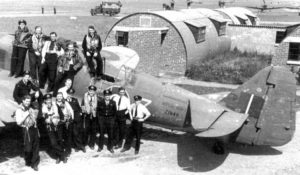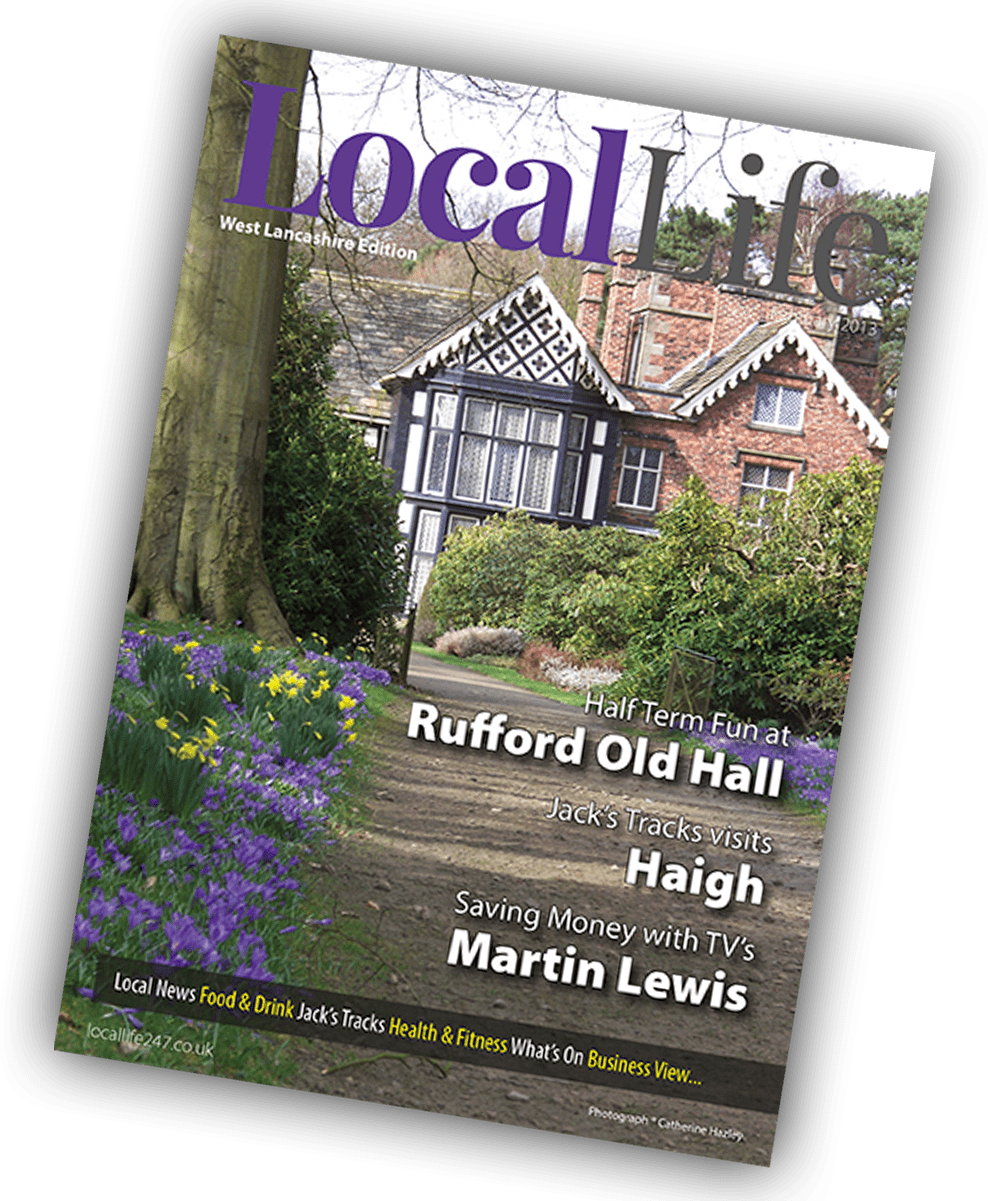Older West Lancashire natives probably remember why Burscough’s Booths supermarket is eerily reminiscent of an air base. With its sleek grey exterior and curved roof, Booths is one of the only reminders that naval air station RNAS Burscough – a.k.a. HMS Ringtail – ever existed on the site.
But exist it did. RNAS Burscough, built in 1942, spanned 650 acres of land for its four runways and plane hangars, acquired to train pilots to land their aircraft onto aircraft carriers. Rather than having three runways the standard 50 yards in width, Ringtail’s were only 30 yards across, making room for a fourth. These also provided a more accurate simulation of landing on a narrow aircraft carrier.
Around 40 squadrons were attached to HMS Ringtail in its years of operation – the first of these was the 808 Supermarine Seafires in October 1943. Joined eventually by 807, 866 and 897, the squadrons completed tactical reconnaissance training before the 758 Airspeed Oxfords squadron also headed to Ringtail.
The airfield saw a whole host of iconic aircraft flock to its runways, including American-built Corsairs, Curtis Hellcats and a succession of famously temperamental British-built Fairey Barracudas.
Burscough was the ideal location to perform flying drills. Euan Jones of the 1820 Squadron commented: ‘From a flying point of view we certainly appreciated the geography of Burscough. Once, after coming back from an exercise over the Irish Sea the weather clamped down. The dear old Blackpool Tower was a welcome sight as we approached through the clouds of driving rain. As the ceiling dropped and I was flat out for Burscough, reasonably confident there were no nasty obstructions ahead – suddenly I swooped over a lady struggling to bring in her washing off the clothes line. I was that low I could have helped her.’
Like many wartime airfields, HMS Ringtail wasn’t without its fair share of tragedy. In February 1946, Royal Canadian Fleet Air Arm soldier Lieutenant Thomas Wilson Wall took off in a Fairey Firefly to complete an exercise in dummy deck landings. As the aircraft rose to 250 feet it was engulfed in cloud cover, meaning flight had to be carried out using the instrument panels alone. At 4000 feet these instruments failed, and the plane began to lose height.

Wall abandoned the aircraft at 800 feet and parachuted to safety, not realising that he had been flying over Bootle. The plane crashed into a populated street, killing a five-year-old girl who had been playing outside and blowing a postman off his bike. The postman, who suffered burns from the resulting explosion, recounts feeling ‘as though he had been soaked in petrol and a mass of flames’.
That wasn’t the only incident to take place at Ringtail. During routine dive bombing exercises in 1944, a Helldiver containing Sub Lieutenant Neville and Steward FT Turner failed to pull out in time, killing both pilot and passenger. They are both buried at Burscough Parish Church.
Ringtail had expanded so much by 1945 that the RAF Woodvale in Ainsdale was commandeered as a satellite station, becoming known as HMS Ringtail 2 in the April of that year and being used by the Royal Navy. In May 1946, the last squadron left HMS Ringtail and the site was kept on as a valuable asset to the Navy. It was used to store aircraft until 1957, when its fields were turned over for agriculture and many of the hangars repurposed for Burscough’s growing industrial estate.
Michael Dawson of Images of Burscough & the Surrounding Areas was introduced to HMS Ringtail as a young boy, growing up in the 1970s. ‘My father used to take me to visit the remains of Camp II, which was situated down Abbey Lane, and Camp III at the bottom of Lordsgate Lane,’ he tells me. ‘The buildings were in a bad state of decay; the metal sheeting had long since gone and the brickwork was crumbling or had collapsed.’
During his childhood expeditions to the Ringtail site, Michael also encountered old fire wells that had transformed into pond-like breeding grounds for newts and frogs.
‘Of course, the main attraction was the control tower, with all its narrow corridors and many rooms.’ The three-storey tower looked over the 32 main hill hangars and two Callender-Hamilton hangars used for storing aircraft, as well as Nissen huts for housing.
The buildings on the Ringtail site succumbed to the elements and were mainly reclaimed by nature; one of the runways was used for crop-spraying planes and a parachuting club until it was forced to close. A campaign in the early 2000s to protect the control tower under listed status eventually failed, and it was demolished in 2004.
That same year, a monument to those who served at Ringtail was unveiled on a grass verge by the B5242 roundabout, which would have been within the boundary of the air station. 400 people attended the opening ceremony – many of them veterans who had travelled a fair distance from home to be there.
‘It was only as I got a little older that I started to realise and learn about the history of the airfield on my doorstep,’ Michael continues. ‘Even today, many people who live in or around Burscough gave me looks of disbelief when I explain to them the history of what they assumed to be an “industrial estate”. A lot of people didn’t know there had been a Royal Naval Air Station adjoining the village!’
It was this that inspired Michael’s new book – ‘HMS Ringtail, RNAS Burscough: A Pearl Under the Clouds’. He wanted to bring the knowledge of the air base to more people in West Lancashire, delving deeper into the human story behind it.
‘Something many people don’t realise is the effect the compulsory purchase order of the land had on local people who lost their homes and farms,’ he explains. ‘I was left with plenty of old files full of information, letters from personnel stationed at Ringtail and accounts from both inside and outside the base.’
These accounts come together in the book to paint a full picture of Burscough’s military history, telling the story of its controversies, the squadrons that trained there, and Michael’s own childhood memories accompanying the old base.
HMS Ringtail: A Pearl Under the Clouds costs £12.50 and is available to purchase from Michael Dawson. Michael can deliver around the Burscough area; alternatively, add £2 for postage and packing. Cheques should be sent to Michael Dawson, 54 The Quays, Burscough, L40 5TW; alternatively, you can contact him on 07795 578025 or at wilsonmiley@live.co.uk


